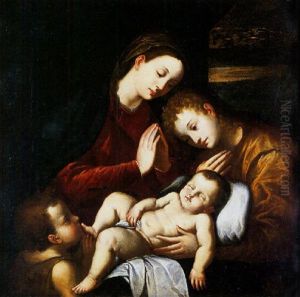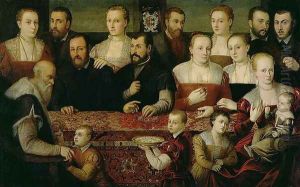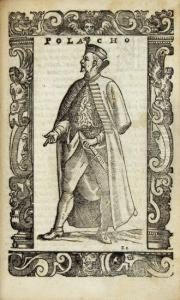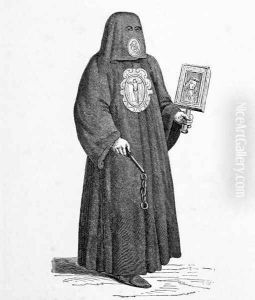Vecellio, Cesare Paintings
Cesare Vecellio was an Italian engraver and painter of the Renaissance period, born in 1566 in Pieve di Cadore, a small town in the Veneto region of Italy. He was a cousin of the renowned painter Titian (Tiziano Vecellio), with whom he is sometimes confused. Cesare's work was heavily influenced by Titian, and he spent a significant portion of his career in Venice, which was a vibrant center for the arts during the Renaissance.
Vecellio is best known for his work as an engraver and for his significant contributions to costume books. His most famous work, 'De gli habiti antichi et moderni di diverse parti del mondo' (Of the Ancient and Modern Dress of Various Parts of the World), published in 1590, was a comprehensive study of the clothing and customs of different people. This book was among the first of its kind to provide detailed illustrations of the dress and customs of individuals from different social classes and regions around the world. It offered contemporary readers insight into the diversity of global cultures and contributed to the broader knowledge of geography and ethnography during his time.
As an artist, Cesare Vecellio's style was characterized by a strong sense of design and precise detailing, attributes that lent themselves well to the art of engraving. Although less is known about his paintings, the few that survive show a clear influence of Titian's color and brushwork, suggesting that Vecellio was not only a follower but also an adept interpreter of his cousin's style.
Despite his contributions to the arts, Cesare Vecellio's work as a painter has been overshadowed by the fame of Titian, and as a result, his paintings are less well-documented and studied. He died in Venice in 1621. His costume book, however, remains a valuable resource for historians of fashion and culture and is a testament to his dedication to documenting the diversity of human customs.



